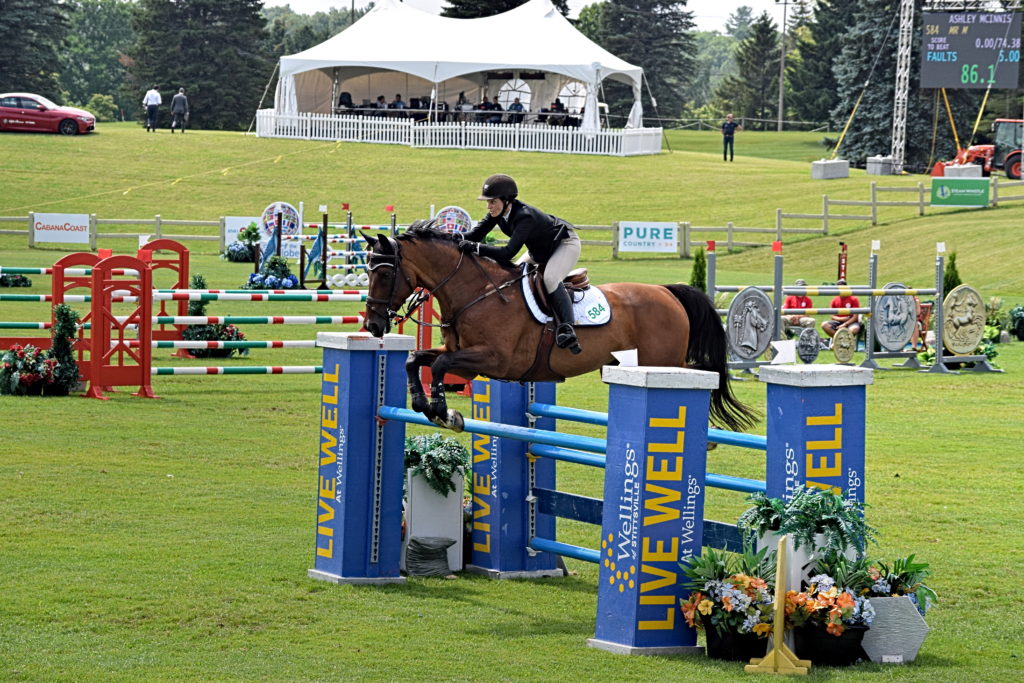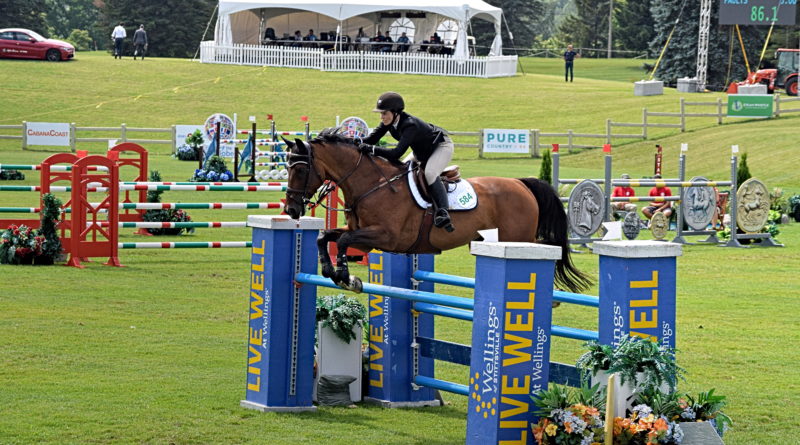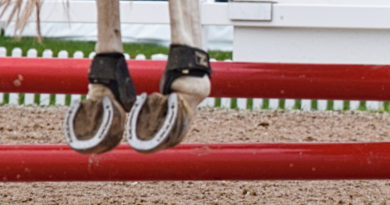Not the “How to” of Horse Training
This is not about the how to of horse training.

It’s not an in depth analysis of what to do if your horse does this or how to correct a horse that picks up an incorrect lead.
or
It isn’t an indepth position review of how to sit the trot.
What it is though is an in depth HOW TO of how to make progress with the training of your horse
or riding
or any thing really for that matter.
Step 1 Start
Just starting is the first step.
But even before you start training your own horse you have to have an understanding of where you want to be and the direction you want to go.
If you are at point “A” troting over trot poles,
and want to get to “B” a horse show and jump over a course
there are many skills that have to happen inbetween to get you there. They have to be:
- obtained,
- developed and
- mastered
before you head into that ring.
This will help you understand how to get those skills. Not necessarily what those skills are but how and where to get those skills to benefit you.
Well maybe a little bit.
But rather understanding the process to get your horse from point”A” to point “B”. If you would like to take your horse along to a certain level of development there are steps you will have to go through.
PRO TIP – write down your goals
Writing down your goals or your point “B” is a perfect place to start. Write down your point “B” pie in the sky goal (like going to the Olympics). Believe it or not, when you commit that point to paper, when you can actuallly see that goal something happens. “Writing down your goals not only forces you to get crystal clear about what you want, the act of setting goals in written form increases your commitment and focus to actually achieving your goals.”
In this Huffinton Post Article, The Power of Writing Down Your Goals and Dreams, discovered that those who wrote down their goals and dreams on a regular basis achieved those desires at a significantly higher level than those who did not. So why not.
Bonus points if you share that goal with a friend. That’s the accountability factor.
It becomes clear that if you THINK about your goal you are half way there. But if you WRITE DOWN your goals, well you engage parts of your brain that transmits this knowledge to every cell in your body.
“Just the act of writing down your dreams and goals ignites an entirely new dimension of consciousness, ideas and productivity to the powerhouse that is your subconscious mind.”
Mary Morrissy, contributor, Huffpost.com
Education
You have to have the education.
Before you bring a horse along to the “next level” you must have experienced the correctness of the next level yourself. This is what you would call education.
The fallacy that you will grow together is just that.
A fallacy.
A mistake.
As we have seen over and over again with well meaning people who purchase foals, yearlings or auction horses so they can learn together. This rarely works out. Unless of course you have an in depth eduction to back up your training.
If you want to teach a horse how to:
- do a flying lead change,
- stand at the mounting block or
- pick up the correct lead
You must first know how a correct flying lead feel change feels, or how a horse stands properly or what a correct actually feels like.
How would you expect a horse, whose brain is the size of a walnut to have read the book on how to perform a flying lead change.
One of the brains of the horse and rider team has to have the experience and knowledge, the education, if you will, of how to perform the required movement or task.
Education can come in many forms.
It may be from a book.
It may be from a knowledgeable person ooach or trainer
or
it may be from a trained horse.
What better way to get an education then from a trained school master who can teach you how things should feel!
How do you get your education.
- Books
- Trainer
- Experience
Education is the platform that our training springs from. Without education how will we know HOW to proceed?
Although formal education in the manner of diplomas and degrees will not ensure your equestrian success some sort of education is. I am sure there are many equestrians with diplomas who have been successful but I am guessing there are several who are are also successful without the piece of paper saying that they have recieved an education in horses. If you are one of these, send me an email. I’d love to “pick your brain”.
Your equestrian education comes from
- your mentors,
- your trainers,
- your instructors/coaches,
- and of course your horse.
Your education can creat your success by putting your skills in the right place and the right time.
And knowing what skills to use at the right time is the important factor.
Pro tip – inlist the help of a professional. Even if it is once per week or once per month. It will be worth it.
Evaluation
To get to your next level you have to
evaluate
where you are now and where you want to be. You have to have a serious talk with your trainer/teacher or coach.
Nothing says your not ready than recieveing a bad test score or poor result at a horse show. Were you ever worried about getting your report card when you got to the end of the school year? Why was that? because someone was evaluating you and maybe you didn’t make the grade?
Maybe it is a poor dressage score or a lot of faults in your jumping class but what really is being evaluated is you and your training.
If your evaluation is not up to snuff it may be time to engage the services of a trainer or coach in your area or online.
If you want to progress with your horse you have to be constently evaluating your progress and planning for your next successes.
pro tip – keep track of your rides, every ride, in a journal.
A riding journal is crucial in the evaluation process.
- The journal is a record of your progress. You can record the exercises you did and how the horse is working, the issues and the successes that were achieved.
- You can spot trends and clues of what may be causing issues. This is how I spotted that my horse was sensitive to barametric pressure changes. I noticed a trend that he was (particularly) spooky about 24 hours before a storm. And also noted that 2 weeks prior to “popping an abscess” he was unusually “alert”. Those issues were noted in a journal so we could track things. Your horse not feeling right. You may flip back a couple of pages in your journal to find that 2 hour hack down the road may be the culprit.
- Record “ah ha moments”. You know those nuggets of wisdom that the lightbulb went off. For you, and your horse. If you had a breakthrough moment, it can be documented so you can:
- remember it for the next time
- share it with someone else
- try it on a different horse.
- Start a library of exercises. All those exercises that your instructor dishes out to you every week can be saved for future use.
- Track your fitness. This is YOUR fitness and the fitness of your HORSE. If you are serious about your success (and I know you are or you wouldn’t have made it this far) you can track pulse, respiration and temperature for the first clue that something is amiss.
Execution
Along the way you have to execute movements. They may be getting to the jump properly, a trot on the correct diagonal or a transition in a flat class. But they have one thing in common. They have to be performed:
The biggest mistake most self-coached equestrians make is lack of consistency.
It is not because they don’t want to. It is because they don’t really understant the importance of consistency. If you knew how important it is, then I am guessing you would be more consistent.
Moderation is the enemy of consistency. Moderation is being inconsistent in my book.
Moderation is riding 2 – 3 times per week on week and then 6 times the following week followed by once the next week. That is inconsistent.
Being consistent is riding 4- 5 times per week. Period. End of story.
Ride Consistently
This has many levels. So let’s start peeling back the layers.
First you have to RIDE CONSISTENTLY. Recreational riding won’t cut it if you want to progress to your next level. Don’t get me wrong here. There is nothing wrong with riding for recreational riding sake. And this is where the fundamental group of grass roots people who will be progressing to the competition programs. This is the pool of people who will dip their toe into the horse competition world. They start at the grass roots recreational level.
However, if you want to progress and go to horse shows, you can say “bye-bye” to riding “Smokey” once a week. And say hello to consistenly showing up and commiting to your own success.
Secondly when riding you have to BE CONSISTENT. Not only do you have to ride consistently, for example 3 – 5 days per week but you have to be consistent within your rides.
This is of particular importance when you are riding your own horse and a young horse you are schooling. You have to remember that the horse hasn’t read the book on how to pick up the correct canter lead and doesn’t inherently know that the canter aid is inside leg on the girth and outside leg behind the girth. So you, as the rider, have to train the horse to know and understand that. The only way to do this is by being consistent:
- in your training
- in your aids
- in your riding
- in your everyday routine.
Or INCONSISTENT.
Ride Completely
This is a difficult, but oh so important, topic. Don’t leave loose ends dangling.
This could also, for me, mean be disciplined in your riding.
Lack of discipline in your riding leaves loose ends that flop around and get caught in things. For example the canter depart.
Do you:
- get a crisp depart onto the correct lead?
- get steps of trot, and the horse falls into a canter?
- sometimes gets the correct lead or
- falls into
- flips their head
- yanks on the reins
- kicks out
- <insert not perfect transition here>
This could be a trot transition or even riding a circle. Are you DISCIPLINED to accept a good or very good transition or circle.
OR
Do you allow the horse to fall on their face, fall in/out on a circle and accept it without correcting it.
PRO – TIP – video yourself riding.
If you have video and don’t have someone to send it to … send it here. I’ll look at it for you.
Ride Concisely
Don’t confuse the horse with a lot of mumbo-jumbo.
Get the best result with the least effort. Stop nagging. You know your horse can feel a fly land on their skin. So why do we have to thug on our horse’s sides to get them to move forward/sideways.
Don’t add a lot of other issues to the pot. Break it down into simple steps that the horse can understand and then put those steps together.
For example. leg yield. a simple exercise that most horses and riders should be able to perform.
Some would get on a young horse and expect them to understand how to go sideways and forward at the same time. There are many steps that have to be completed correctly before getting here.
How to
- accept the bit,
- contact,
- leg pressure,
- moving forward and sideways,
to get on and say, “my horse won’t leg yeild” is not fair to the horse. There is a process to get there. Break it down into bite size chunks for the horse to understand:
- moving away from the leg. This may start in the stable or on cross ties while grooming
- moving sideways from the leg without running away from the leg. Start with turn on the forehand.
- accepting the outside rein contact and not bulging the shoulders.
- riders not keeping the horse parrelell to the track.
The list is endless.
Ride Correctly
All of these go hand in hand.
If you ride correctly, consistently, consiselty and completely with discipline, you and your horse will move up the levels and be the go – to person to beat on show day.



